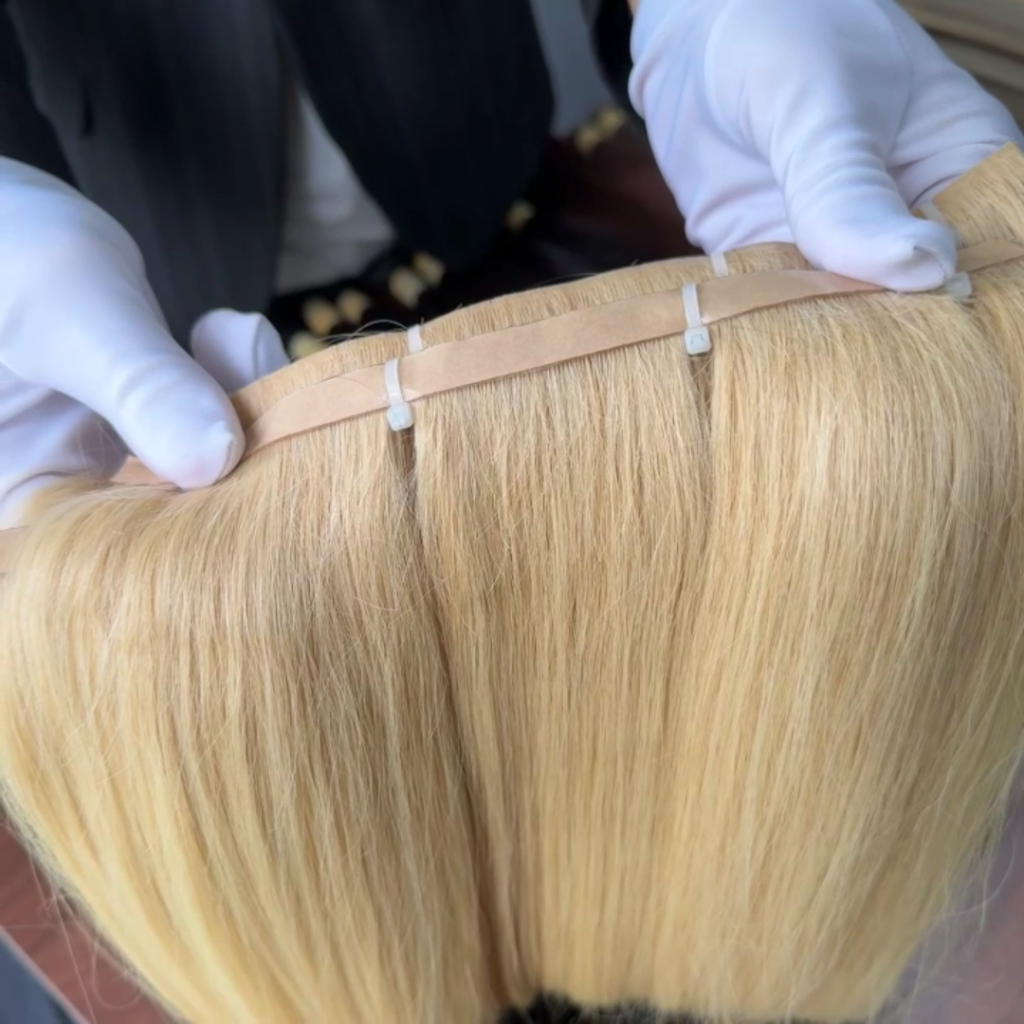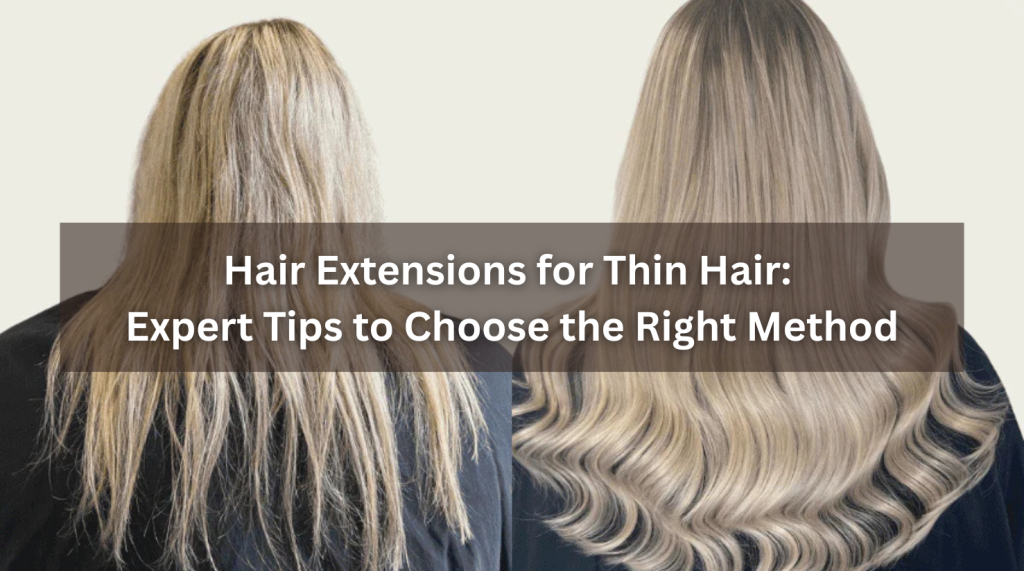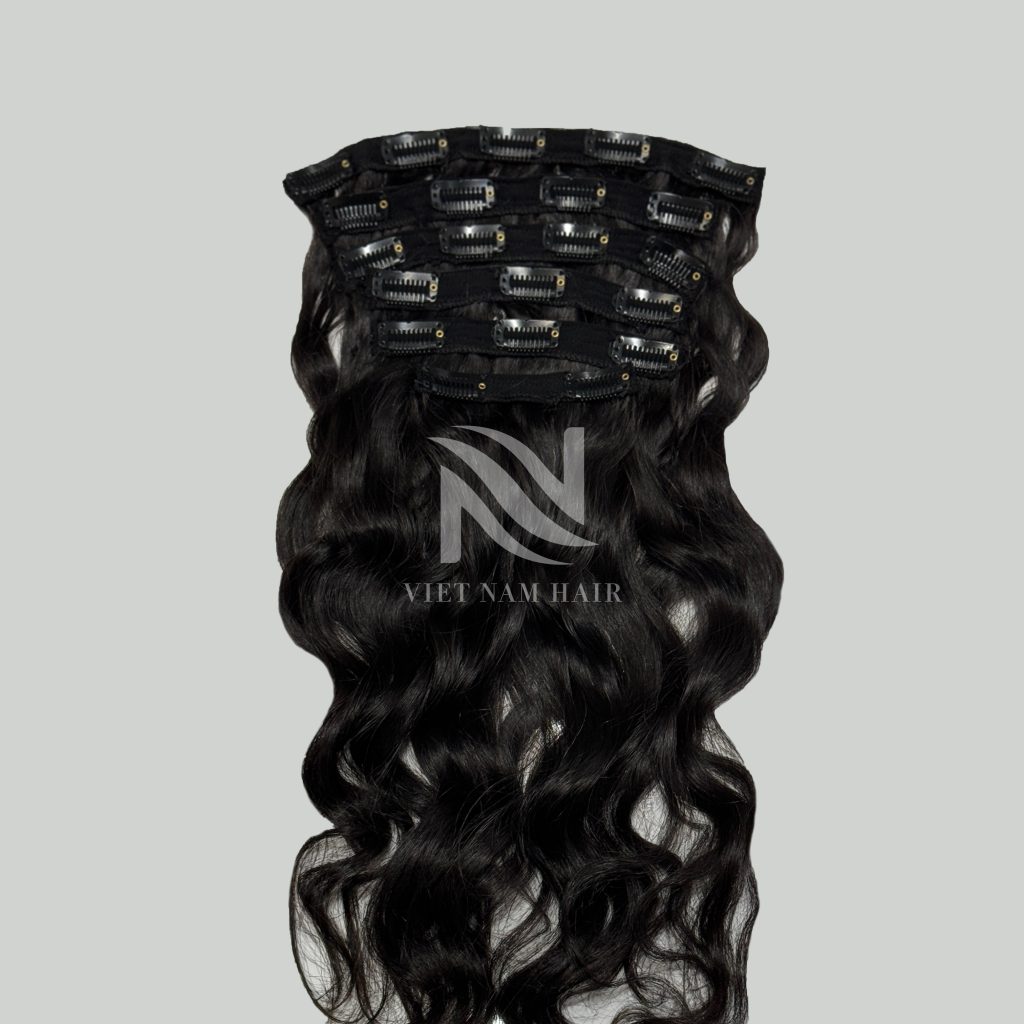Hair Knowledge
Hair Extensions for Thin Hair: Expert Tips to Choose the Right Method
If you’ve ever felt frustrated by how difficult it is to achieve volume or length with naturally thin hair, you’re not alone. Many people with fine strands turn to hair extensions for an instant boost — but not all extension types are suitable for fragile or sparse hair. In fact, choosing the wrong method can do more harm than good.
In this guide, we break down everything you need to know about Hair Extensions for Thin Hair, from understanding your hair type to selecting the most lightweight and damage-free options — especially for salons and clients in the European market.
1. Things to Know about Thin Hair
1.1.What is Considered Thin Hair?
Thin hair typically refers to hair with a smaller diameter of individual strands and/or fewer follicles per square centimeter. It’s important not to confuse “thin hair” with “fine hair.” While fine hair speaks to the strand’s thickness, thin hair involves both density and diameter.
In salons, understanding this distinction helps you choose the right hair extension system — one that adds volume without stressing the scalp or causing breakage.

1.2. Key Characteristics of Thin Hair
Understanding thin hair’s behavior helps in recommending the best-fitting extensions. Here are typical traits:
-
Low density at the roots, especially near the crown and temples.
-
Lack of volume even after blow-drying.
-
Prone to breakage, especially with frequent styling.
-
Visible scalp when parted.
-
Often reacts poorly to heavy products or bulky attachments.

1.3. Common Causes of Thin Hair
Before applying extensions, identifying the underlying causes of hair thinning is essential for safe and effective styling.
🔹 Genetics
Inherited thin hair is common in many European populations. It often presents as soft, fine strands from a young age.
🔹 Aging
Hair naturally thins with age. According to the European Trichology Institute (2023), around 35% of women over age 50 experience significant thinning due to hormonal shifts and follicle shrinkage.
🔹 Hormonal Changes
Pregnancy, menopause, thyroid issues, and conditions like PCOS all disrupt hair growth cycles, leading to patchy or overall thinning.
🔹 Stress and Nutrition
High cortisol levels, poor diet, and sleep deprivation can cause telogen effluvium — a form of temporary hair shedding.
🔹 Chemical Damage
Frequent bleaching, perming, or use of hot tools without protection leads to strand fragility and breakage.
🔹 Medical Factors
Alopecia areata, anemia, or certain medications (e.g., chemotherapy, antidepressants) may also cause progressive thinning.
2. Things to know about Hair Extensions for Thin Hair
2.1. Are Hair Extensions Safe for Thin Hair?
Yes — but only if done correctly.
Thin hair is more vulnerable to tension and weight. Some extension types may pull at the roots, causing further damage (known as traction alopecia). That’s why salons must carefully assess the hair type and choose methods that prioritize lightweight, non-invasive application.
Using the wrong system may result in more harm than good, especially for clients with sensitive scalps or medical-related thinning.
2.2. Why Thin Hair Requires Special Attention with Extensions
Thin hair is more vulnerable to damage than medium or coarse types. The added weight or tension from extensions can cause breakage, scalp discomfort, or long-term hair loss (traction alopecia) if not applied correctly.
For salons, this means choosing techniques and products designed for low-impact application — with minimal tension, lightweight sections, and natural blending.
2.3. How to Choose Extensions for Thin Hair
Here are five key factors to evaluate:
-
Weight per strand: Lighter is better. Avoid bulky bonds or heavy wefts.
-
Application method: Gentle, non-damaging techniques like tape-in or clip-in are ideal.
-
Hair type compatibility: Use soft, flexible, 100% Remy human hair that mimics the client’s natural texture.
-
Maintenance level: Choose a method your client can maintain without damaging their own hair.
-
Styling versatility: Pick extensions that allow volume without heat damage or strain.
2.4. What to Consider Before Applying
Before applying hair extensions on clients with fine hair, salons should conduct:
-
Scalp & hair health check
Examine for thinning spots, sensitivity, or conditions like dermatitis. -
Lifestyle consultation
Discuss how often the client uses heat, ties their hair, or engages in activities like swimming. -
Color matching
Fine hair reveals bonds easily, so matching both tone and undertone is essential.
Tip for stylists: Always patch-test adhesives or keratin bonds, especially on sensitive scalps.
3. Choose Hair Extensions for Thin Hair
3.1. Best Suitable Hair Extensions Method
✅Tape-In Extensions
Tape-ins are flat, lightweight extensions applied by sandwiching the natural hair between two tape wefts. They are the most recommended method for thin hair due to their minimal weight and excellent blendability.
-
Why they’re ideal:
-
Lay flat against the scalp
-
Spread weight across a wider section
-
Nearly invisible when applied correctly
-
-
Maintenance:
-
Requires reapplication every 6–8 weeks
-
Avoid oil-based products near the adhesive
-
-
Stat: Over 62% of European stylists choose tape-in for thin-haired clients (Behind the Chair survey)

✅ Clip-In Extensions (for Occasional Use)
Clip-ins offer flexibility and are perfect for occasional wear — like events, holidays, or photo shoots.
-
Why they’re safe:
-
No chemical or heat application
-
Easy to apply and remove
-
No strain if applied correctly and not worn daily
-
-
Pro tip:
Choose sets with fewer clips and lower density (80–120g total weight). -
Note:
Wearing daily may lead to long-term stress on hair roots.
3.2. Hair Extension Methods to Avoid
While some extensions are salon staples, they can be too aggressive for fragile hair types. Here are the main ones to avoid or use with extreme caution:
🟥Keratin Bond (Pre-Bonded) Extensions
-
What they are: Individual strands fused to the hair using heat-activated keratin.
-
Why they’re risky:
-
High heat can dry or damage hair
-
Bonds create tension on individual strands
-
-
Risks:
-
Breakage at attachment points
-
Difficult removal without shedding
-
-
Best for: Medium to thick hair only.
🟥 Nano Ring Extensions
-
What they are: Micro rings attached to individual strands using a small bead or loop.
-
Concerns:
-
Metal rings can tug on delicate roots
-
Require high precision to prevent breakage
-
-
Stat: 25% of users with thin hair experienced shedding after 3–4 months (European Hair Institute).
🔴 Sew-In (Weave) Extensions
-
Method: Hair is braided tightly and extensions are sewn into the base.
-
Why it’s unsuitable:
-
Tension from braids pulls on thin roots
-
High risk of traction alopecia
-
-
Recommendation: Avoid completely unless the client has dense, strong hair.
Final Thoughts
For clients with thin hair, the key is customization. The most suitable hair extensions are not the trendiest, but those that are the least invasive and most natural-looking. As a salon, always perform a detailed consultation and opt for gentle methods like tape-in or clip-in — combined with tailored maintenance advice.
✅ Want Expert Advice for Your Hair Type?
Whether you’re a stylist looking to expand your hair extension services or a client ready to transform your look, N Hair Factory provides 100% human hair extensions designed for all hair types — especially thin hair. Contact us today for product recommendations or wholesale pricing!






